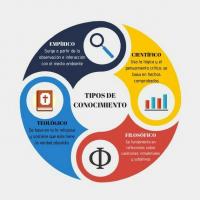Difference between autotrophic and heterotrophic organisms
Autotrophic organisms are beings that can produce their own food using light (photosynthesis) or chemical energy (chemosynthesis), which is why they are known as producer beings. Heterotrophs cannot synthesize their own food and feed on other organisms, such as plants and animals, and for that reason they are known as consuming beings.
| Autotrophic organisms | Heterotrophic organisms | |
|---|---|---|
| Definition | Organisms capable of producing their own food through photosynthesis, or chemosynthesis. | Organisms unable to produce their own food from inorganic sources and depend on other organisms in the food chain. |
| Produce your own food | Yes. | Not. |
| Level in the food chain | Producer. | Primary, secondary and tertiary consumer. |
| Types |
|
|
| What do they eat | They produce their own food through light or chemical energy. | They eat other organisms (plants or animals) for protein and energy. |
| Examples | Plants, algae and some bacteria. | Ox, rabbit (herbivores), humans, pig (omnivores), lion, alligator (carnivores). |
Energy production of autotrophic organisms

Autotrophs produce their own energy by one of the following two methods:
Photosynthesis
Photosynthetic beings use energy from the sun to convert water and carbon dioxide into glucose. Glucose supplies plants with energy and is used to make cellulose, which in turn is used to build cell walls. Example: plants, algae, phytoplankton and some bacteria.
Carnivorous plants use photosynthesis to produce energy, but they depend on other organisms for nutrients such as nitrogen, potassium, and phosphorus. Therefore, these plants are autotrophic, with heterotrophic complementation.
Chemosynthesis
Chemosynthetic beings use the energy from chemical reactions to produce food. Chemical reactions are normally between hydrogen sulfide or methane with oxygen. Carbon dioxide is the main source of carbon for chemotrophs.
Some examples of chemosynthetic beings are: bacteria found within active volcanoes, microorganisms found in hydrothermal vents, at the bottom of the sea or in water sources hot.
You may be interested in knowing the kingdoms of nature.
Obtaining energy by heterotrophic organisms

Heterotrophs survive by feeding on other organisms in the food chain, such as plants or animals. Herbivorous beings are called primary consumers, because they feed directly from the producers. Carnivores are the secondary consumers, feeding on herbivores.
In addition to these two main types, heterotrophic organisms can also be classified as:
- Omnivores: They eat both meat and vegetables. Example: humans, bears, pigs;
- Hematophages: They feed on the blood of other beings. Example: louse, bug, mosquito;
- Ornithophages: They feed on the meat of birds. Example: peregrine falcon;
- Ictiophages: They feed on fish. Examples: sea lion, osprey;
- Dung: They feed on the feces of other animals. Example: Beetles and some species of flies;
- Insectivores: They eat insects. Example: toads;
- Scavengers: They feed on organic waste, whether of vegetable or animal origin. Example: buzzard, hyena;
- Planktivores: They feed on plankton. Example: Stripe.
Learn more about:
- Photosynthesis and respiration.
- Animal and plant cell.
Food chain

The food chain is the succession of energy transfer between living beings. Autotrophs do not depend on other organisms for food. They are the main producer and therefore are in the first place in the food chain.
Heterotrophs that depend on autotrophs and other heterotrophs for energy are then placed in the food chain. Herbivores that feed on autotrophs are placed in the second trophic level, and carnivores and omnivores are placed in the next trophic levels.
You may be interested in knowing about Food and nutrition.

She has a PhD in Biochemistry from the Venezuelan Institute of Scientific Research (IVIC), with a degree in Bioanalysis from the Central University of Venezuela.



